Disclosure: We may earn commissions if you purchase products after clicking on a link from our site.
Do you want to learn how to catch mackerel? Mackerel is high in protein and rich in omega-3 fatty acids. Additionally, anglers also like to fish for mackerel as it is a good bait to catch other fish. Almost all other fish are attracted to a piece of mackerel on the hook. If you want to learn how to catch mackerel, then this article will help you develop the skills and gain the knowledge needed to catch mackerel.

Table of Contents
How To Catch Mackerel From A Boat
When fishing for mackerel in a boat, you can let the boat drift and use Sabiki bait lures with a pear-shaped lead weight attached at the lower end of the string. With the lure on your line, lower it slowly and jig it up and down until you get a strike. If you are not successful in getting the fish on the hook, repeat the procedure until you can hook it.
When you are fishing for mackerel in a boat, watch for diving seabirds. If you see them circling and diving into the water, that is a sign that there are mackerel in that area and the seabirds are diving in and picking up some of the mackerel. That is an area you want to go to and catch some mackerel.
You can also catch mackerel in a boat by using the Paravane rig. With the boat going not more than 3 knots, use a paravane. The paravane will pull the lure down into the water.

How To Catch Mackerel From Shore
Most often you will find more mackerel around the shores in summer than in other seasons. Mackerel like deep water, therefore fish for them with your boat on beaches, jetties, piers, and breakwaters.
1. Spinning Fishing Method
When fishing for mackerel from the shore, you can use the spinning fishing technique to catch mackerel. Use a light spinning rod, a fixed spool reel, and a small lure. Cast your line and reel it back in when you get a tight line. Several methods can be used to reel the lure back in.
The Big Long Pull
With this method, you pull the rod spinning rod back in one motion while keeping it at waist level. Then move it forward again while you reel in the slack. Repeat this procedure for about 3 or 4 complete turns on the reel.

The Short Sharp Twitch
After casting your line and getting a tight line, keep the rod tip down low and gently pull the rod while you slowly reel the line in. The short sharp twitch works well for lures with rattles.
The Delayed Reaction
With the delayed reaction method, you keep the rod still and give the reel a few turns for the lure to move a few meters and then pause for about 4 to 8 seconds. Then repeat this procedure.
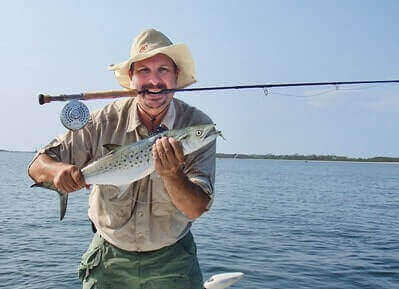
2. Float Fishing
To float fish you will need a float fishing rig. You will need a spare line, a stop knot or rubber band, beads, a float, a weight, a swivel, and a hook.
When you have made your float, you will cast your line and wait. When a mackerel is on your line, the float will disappear and go below. When the float goes down into the water, then you won’t raise your rod in a single, fast, and continuous action. It is assumed that the fish is on the hook and when you raise the rod up fast, you can confirm the assumption.
If you realize that your float is hardly under the water, it could be that the fish is eating your bait and not on the hook. In this scenario, it is your call whether to strike or not. You can decide to leave it for a little while to see if the fish gets caught on the hook before you pull it up.
3. Feathering Fishing Method
With the feathering method, you will have from 3 to 6 feathers or plastic strips attached to the hook. It features a swivel or a loop at either end and the main line to one end and the weight to the other end. Drop your line into the water below you and slowly raise and lower the rod.

How To Catch Mackerel From Pier
When fishing for mackerel from the pier, cast your lures and baits into areas where mackerel may be hanging out. Look for underwater structures like wrecks, rocks, logs, shoals, fallen trees, and other structures. Casting and retrieving is one of the popular fishing methods used from a pier. Still fishing, night fishing, and jigging are also used to catch mackerel from the pier.
Shrimp, minnows, squid, sand eels, small fish, and menhaden are some of the bait anglers use when fishing for mackerel. Spoons and plugs are lures used to catch mackerel. Sabiki rig is also used when fishing for mackerel.
How To Catch Mackerel In Maine
You can fish for mackerel in a boat or from the shore. When fishing from a boat, trolling is the fishing method often used. Lures and baits are used when trolling for mackerel in Maine. Shrimp is often used as bait when fishing for mackerel.
Mackerel can also be caught from the shore in Maine. Vertical jigging is one of the best fishing methods used when fishing for mackerel in Maine. Baitcasting also works well when fishing for mackerel in Maine.
Types of Fishing Floats
There are several fishing floats and they are the light-up at-night float, the polystyrene float, the plastic float, and the tiny float.
1. Light-up at Night Float
The light-up at night float is a specialized fishing float designed to enhance visibility and attract fish during low-light conditions or nighttime angling. These floats typically feature built-in LED lights that illuminate the float, making it easily visible to anglers even in darkness.
The bright light emitted by these floats serves multiple purposes: it helps anglers track the position of their bait or lure, detect subtle bites more easily, and attract fish to the vicinity of the float. This type of float is particularly useful for fishing in murky or deep waters where visibility is limited, as well as for targeting nocturnal species that are more active during the night.
Additionally, the light-up at night float adds an element of excitement to fishing adventures after sunset, offering anglers the opportunity to enjoy their favorite pastime well into the evening hours.
2. Polystyrene Float
The polystyrene float is a popular type of fishing float known for its versatility and buoyancy. Constructed from lightweight and durable polystyrene foam, these floats are highly buoyant, making them ideal for suspending bait or lures at desired depths in the water column.
Polystyrene floats come in various shapes and sizes, including cylindrical, oval, and round designs, catering to different fishing techniques and preferences. They are often equipped with attachment points or clips for securing fishing lines, and some models may feature adjustable buoyancy to accommodate varying water conditions.
One of the key advantages of polystyrene floats is their affordability and widespread availability, making them accessible to anglers of all skill levels. Whether used for freshwater or saltwater fishing, polystyrene floats provide reliable performance and ease of use, making them a staple accessory in many anglers’ tackle boxes.
The polystyrene float is good for casting at long distances as it is aerodynamic and uses a heavyweight. It doesn’t crack and is not cheap. One negative for this float is that it scrapes the line and slowly weakens it. It requires you to check it regularly or the line might break when you are casting or reeling in a mackerel.
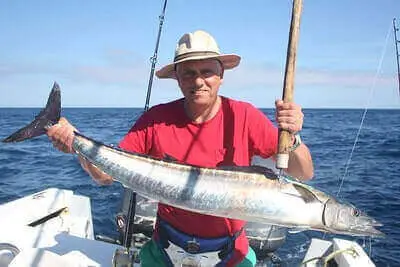
3. Plastic Float
Plastic floats are a common and versatile type of fishing float utilized by anglers worldwide. These floats are typically made from durable and lightweight plastics, such as polyethylene or PVC, offering excellent buoyancy and longevity.
Available in various shapes and sizes, including round, oval, and torpedo designs, plastic floats cater to different fishing techniques and environments. They often feature bright colors for high visibility and may come with attachment points or clips for securing fishing lines.
Plastic floats are suitable for both freshwater and saltwater fishing and are commonly used for float fishing, drift fishing, and bobber fishing. Their affordability, durability, and ease of use make plastic floats a popular choice among anglers of all experience levels, from beginners to seasoned veterans.
4. Tiny Float
Tiny floats, also known as micro floats or mini floats, are diminutive fishing floats designed for ultra-sensitive fishing applications. These floats are incredibly small in size, often no larger than a pea or a grain of rice, and are crafted from lightweight materials like balsa wood or plastic.
Despite their petite dimensions, tiny floats provide excellent sensitivity, allowing anglers to detect the slightest bites from cautious or finicky fish species. They are commonly used for delicate fishing techniques such as micro fishing, finesse fishing, or targeting small species like panfish, trout, or crappie in clear or shallow waters.
Tiny floats are typically attached to the fishing line using delicate rigging methods, and their inconspicuous nature makes them ideal for stealthy presentations in calm or heavily pressured fishing environments. While they require a gentle touch and precise rigging, tiny floats offer unparalleled sensitivity and finesse for anglers seeking subtle and nuanced fishing experiences.
The tiny float is sensitive such that you can easily detect the faintest of bites. It is harder to use as there isn’t much top showing but after using them for some time, you will get to like them. if you are fishing a calm sea and distance isn’t an issue, then the tiny float is a good choice.
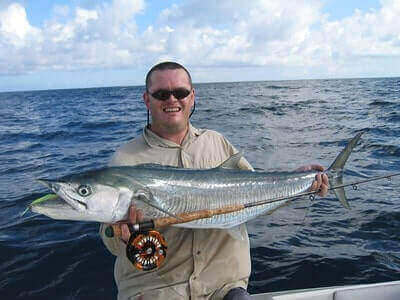
How To Catch Mackerel From A Pier
1. Float Fishing
Float fishing from a pier is a popular and effective method for catching mackerel. Anglers use specialized floats, also known as bobbers or floats, to suspend their bait at a specific depth in the water column, allowing them to target mackerel feeding at various depths.
Typically, a small baitfish or strip of fish such as mackerel belly, herring, or sand eel is used as bait, either whole or in pieces. The float is adjusted to the desired depth, often corresponding to where mackerel are seen feeding or where they are known to be swimming.
When a mackerel strikes the bait, the float will bob or dip, alerting the angler to the bite. This method is particularly effective when mackerel are feeding near the surface or at mid-level depths, as it allows anglers to cover a wide area and naturally present the bait.
Additionally, float fishing from a pier provides an accessible and enjoyable fishing experience for anglers of all skill levels, making it a popular choice for targeting mackerel in coastal waters.
When fishing mackerel from a pier, you can also use the float fishing method. Just cast your line about 5 to 30 yards and wait. When the float goes below the water, that most likely means a mackerel is on it. You then raise your rod in a quick and continuous action. After raising your rod, you can see if you have the mackerel or not.
2. Feathering
Feathering is a widely used fishing technique employed by anglers to catch mackerel from a pier. It involves casting a rig equipped with multiple small hooks adorned with colorful feathers or tinsel into the water and retrieving it rapidly through a shoal of feeding mackerel.
The shimmering and fluttering motion of the feathers mimics the appearance of small fish or prey, attracting the attention of mackerel and inducing strikes. Feathering rigs are designed to imitate the movement of a small shoal of baitfish, making them irresistible to hungry mackerel.
This technique is particularly effective when mackerel are present in large numbers and actively feeding near the surface. It offers an exhilarating and action-packed fishing experience, making it a favored method among pier anglers targeting mackerel along coastal waters.
When fishing for mackerel from a pier, you can also use the feathering technique. Drop the feathers directly below you and jig them up and down. This may seem simple, but that simple-looking technique will make you catch many mackerel.

Mackerel Fishing Tips
1. When you use the feathering technique to catch mackerel, fish over clean ground. You don’t want to fish over rocks and weeds.
2. Fish for mackerel at high tide. They usually follow the tide as it comes in.
3. Dawn and dusk are the best time to catch mackerel.
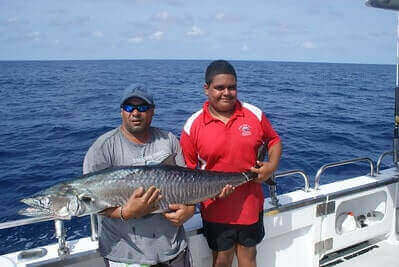
4. When searching for mackerel, look for deep water. Mackerel searches the open seas looking for food. Mackerels don’t hang around structures and wrecks.
5. If you don’t intend to eat them, don’t hold the mackerel on its sides with your hands to unhook it. Jiggle the hook out of its mouth or try to hold it by the top and bottom to unhook it.
6. You can quickly kill a mackerel by breaking the neck. Insert your finger onto the roof of the inner mouth and quickly bend the head backward.
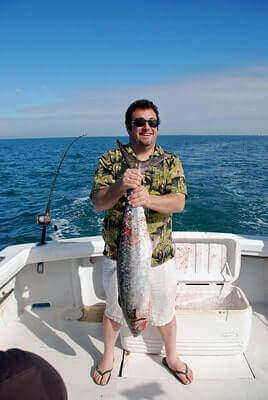
7. Use disgorgers to unhook the fish if you are using lures or Sabikis.
8. Use a braided line to cast at farther distances and increase bite sensitivity.
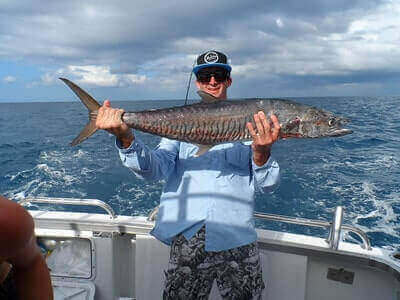
9. Use a strong, razor-sharp hook size 2-3 for hookups.
10. The best bait for mackerel is mackerel.
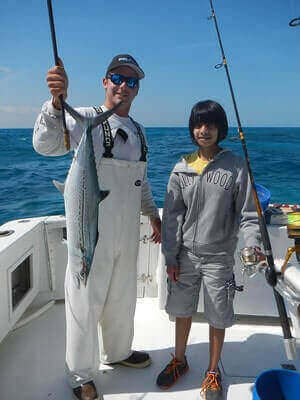
The Bottom Line
Mackerel is a favorite of anglers as it is a healthy fish and is bait for almost all other fishes. In this article, we shared information and fishing techniques to help you catch mackerel. if you want to learn how to catch mackerel, then after reading this article, you will know to be a better angler for catching mackerel.
If you also fish for spotted seatrout, salmon, and walleye, then how to catch spotted seatrout, how to catch salmon, and walleye fishing tips will help you catch more of these fish.